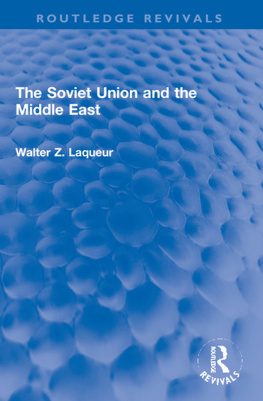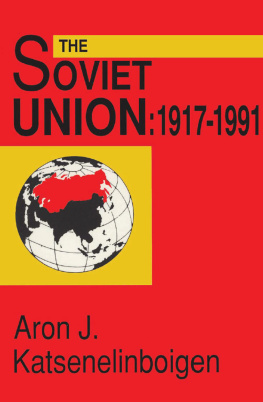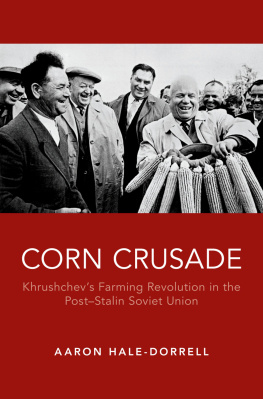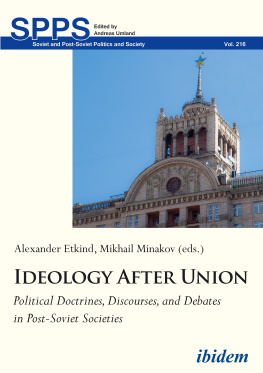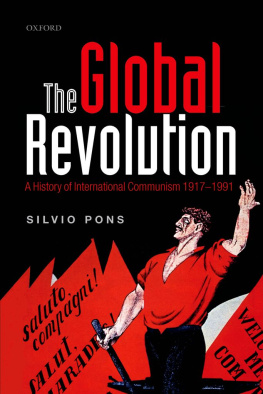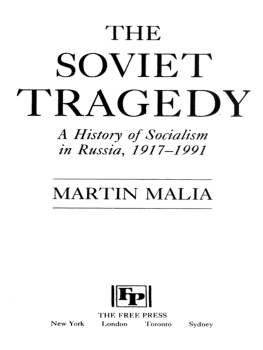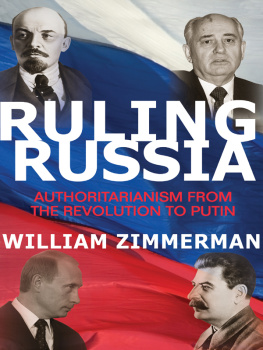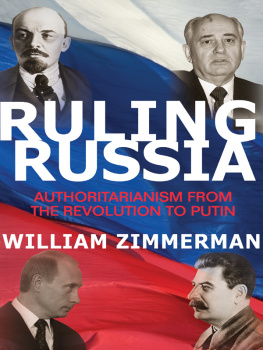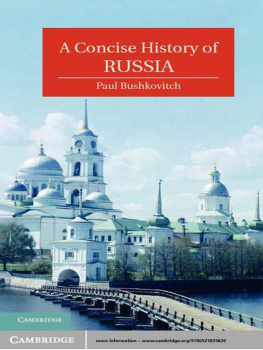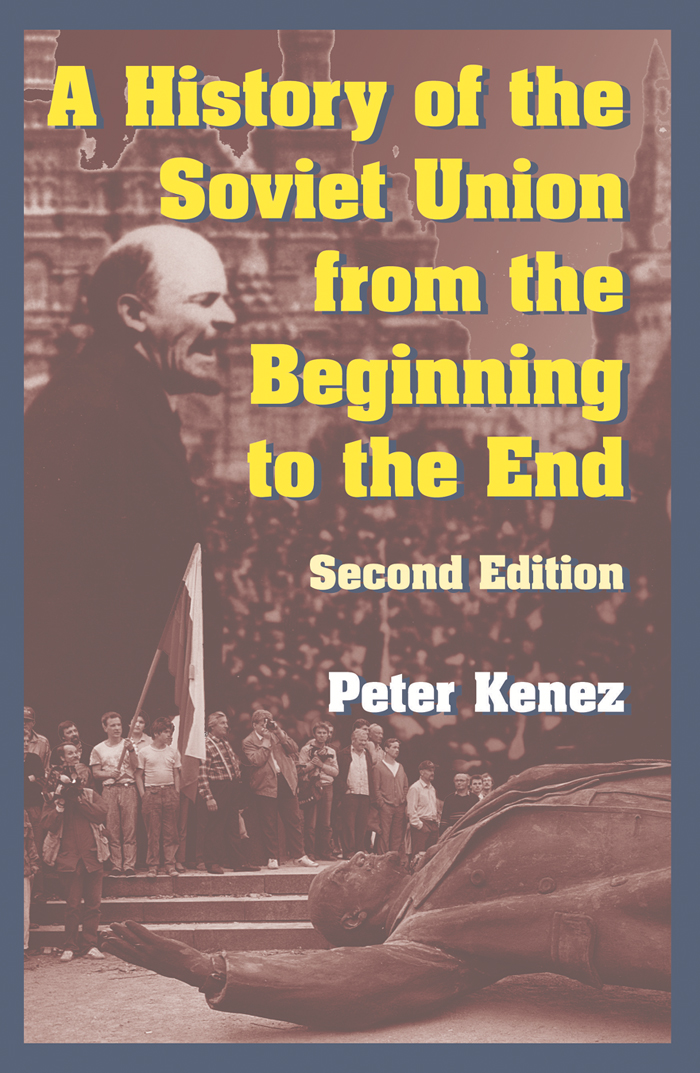A History of the Soviet Union from the Beginning to the End
Second Edition
Peter Kenezs A History of the Soviet Union from the Beginning to the End examines not only political change but also social and cultural developments. The book identifies the social tensions and political inconsistencies that spurred radical change in the government of Russia, beginning at the turn of the twentieth century, culminating in the revolution of 1917. Kenez envisions that revolution as a crisis of authority that posed the question, Who shall govern Russia? This question was resolved with the creation of the Soviet Union.
Kenez traces the development of the Soviet Union from the Revolution, through the 1920s, the years of the New Economic Policies which he sees as crucial to any interpretation of the history of the Soviet Union and into the Stalinist order. He shows how post-Stalin Soviet leaders struggled to find ways to rule the country without using Stalins methods but also without openly repudiating the past, and to negotiate a peaceful but antipathetic coexistence with the capitalist West. In this new edition, he also examines the post-Soviet period, tracing Russias development up to the present day.
Peter Kenez received his B.A. from Princeton University and his Ph.D. from Harvard University. He is the author of many articles and books, including Cinema and Soviet Society, 19171953, and Varieties of Fear. He is currently Professor of History at the University of California, Santa Cruz.
A History of the Soviet Union from the Beginning to the End
Second Edition
PETER KENEZ
University of California, Santa Cruz

CAMBRIDGE UNIVERSITY PRESS
Cambridge, New York, Melbourne, Madrid, Cape Town, Singapore,
So Paulo, Delhi, Dubai, Tokyo
Cambridge University Press
32 Avenue of the Americas, New York, NY 10013-2473, USA
www.cambridge.org
Information on this title: www.cambridge.org/9780521864374
Peter Kenez 1999, 2006
This publication is in copyright. Subject to statutory exception and to the provisions of relevant collective licensing agreements, no reproduction of any part may take place without the written permission of Cambridge University Press.
First edition published 1999
Second edition first published 2006
Reprinted 2006, 2007, 2009
Printed in the United States of America
A catalog record for this publication is available from the British Library.
Library of Congress Cataloging in Publication Data
Kenez, Peter.
A history of the Soviet Union from the beginning to the end /
Peter Kenez.
p. cm.
Includes bibliographical references.
ISBN 0-521-86437-2 (hb). ISBN 0-521-68296-7 (pb)
1. Soviet Union History. I. Title.
DK266.K43 1999
947.084 dc21 98-27977
ISBN 978-0-521-86437-4 Hardback
ISBN 978-0-521-68296-1 Paperback
Cambridge University Press has no responsibility for the persistence or accuracy of URLs for external or third-party Internet Web sites referred to in this publication and does not guarantee that any content on such Web sites is, or will remain, accurate or appropriate.
To P.K., as always
Contents
Acknowledgments
I am grateful to my friends Professors Norman Pereira, Denise Young-blood and Hugh Ragsdale, who read the entire manuscript and made helpful comments.
Introduction
Leibnitz, the great German philosopher and scientist, at the beginning of the eighteenth century, once expressed his envy of Russia. He argued that because Russia had neither civilization nor history, the reforming tsar, Peter, could start with a tabula rasa. His line of reasoning was based on the assumption that people and institutions are infinitely malleable. Of course Leibnitz lived in an age more innocent than ours, and no one today would make such a naive statement. We know that history never starts completely anew and that the past not only matters, but sometimes weighs heavily on the present.
Obviously both change and continuity are real. Modern Russia is not what it was a hundred or two hundred years ago, and to believe that Russians are condemned to repeat the past forever is a crude error. But at the same time, there are trends and mental attitudes which continue for a long, long time. Church historians, for example, have shown that some unique tenets of the Orthodox faith and ideas held by such major authors as Tolstoi and Dostoevskii reflect features of Russian paganism, even though the people had converted to Christianity over one thousand years ago. Stalin consciously modeled himself on the sixteenth-century Tsar Ivan the Terrible, and Soviet propagandists at the time of the Second World War reminded Russians how Teutonic (i.e., German) warriors had behaved in the thirteenth century. Such examples could easily be multiplied.
We often hear the opinion that democracy in todays Russia is doomed because the nation has no democratic traditions. The implication is that since Russia has always been autocratic, it is bound to remain so forever; the people want strong rulers and willingly accept tyrants. By contrast, some nineteenth-century historians argued that the Russians are basically anarchistic people. They pointed out that Russians did not even form their own state, but needed the services of foreigners, the Vikings. Sometime in the ninth century these nomadic traders and warriors came from Scandinavia on their own or, according to the Russian chronicle that beautiful but not always reliable source were invited by the Slav tribes living in the territory of modern Ukraine. Before that time the Slavs in this territory had lived under the rule of nomad empires and paid tribute to them. These empires disappeared one after another, and it is an irony of history that a fundamentally agricultural people, knowing only the loosest form of political organization, managed to prevail while others, much better organized, possessing far more powerful armies, disappeared, often hardly leaving a trace behind.
The Vikings who came to the modern-day Ukraine using the extensive north-south river system for trade, could not have been very numerous, and they soon were absorbed into the Slav population. The kind of state that they created hardly deserves the name state, for it was a loose federation of cities, headed by the prince in Kiev, the most important of the towns. The city-states collaborated with one another in order to protect the valuable trade routes from Scandinavia to Byzantium, the richest and culturally most advanced country outside the Orient in the early Middle Ages. Although the city-states were headed by princes from the same family, they spent as much time fighting one another as they did fighting foreigners. Both Ukrainians and Russians proudly claim the heritage of that Kievan state, and they regard this period of their history as a golden age. Indeed, during that period Russia, which became Christianized in 988, came to be accepted into the European family of nations, and by no definition could it be described as backward. This fact is demonstrated by the degree of intermarriage between the Kievan princely family and other European ruling families. Several centuries passed before the Russian ruling family would once again be accepted as equal by European royalty.
In the Kievan political system, the city assembly, the


